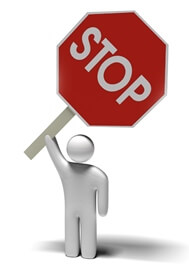 How to Defend Against Claims of Patent Infringement
How to Defend Against Claims of Patent Infringement
Oftentimes I am contacted by potential clients who receive letters claiming that they are infringing another entity’s patent rights. The letters demand that the clients immediately stop using the patented product and/or process and pay substantial monetary damages. The letters usually include threats of immediate litigation and enhanced damages, including payment of the patent holder’s attorney’s fees. If you are a business owner and receive one of these infringement communications (sometimes referred to as a “cease and desist” letter), what should you do?
First, review the patent. The letter should include the patent number (usually a seven digit number preceded by “U.S.”). You can find most patents online – the simplest way is to search Google Patents. Get a pdf version of the patent so that you can review the figures (usually drawings or charts) in the patent. The most important part of the patent is the claims portion – located at the end of the patent. Look at some of the claims and compare your product/process to what the patent owner claims it owns. If you have questions about the inner workings or technical details of your product or process, contact your in-house technical expert and have him/her help you with the comparison. This exercise should give you some sense of whether the claims are related to your product/process or altogether different.
Next, take a look at the dates on the face of the patent. When was the patent application filed? Were you making your product or using your process prior to the date of the application/invention? If so, you may have a defense that the patent is invalid.
When did the patent issue (usually the date in the upper right hand corner of the patent under the patent number) and how long is left on the term of the patent? If the accused process was only in use prior to the date the patent issued, you have not infringed the patent. Has the patent expired? The term of the patent is the date of issuance until expiration. This is the period of time during which a patent is valid. For patent applications filed after June 8, 1995, the term is twenty years from the filing date of the earliest U.S. application to which priority is claimed.
Get a sense of your revenue that is associated with the accused product/process. If the patent did not issue until January 15, 2015 and you phased out the accused product in February of 2015, the patent owner likely won’t be able to claim a significant amount of damages. Damages are usually assessed as a reasonable royalty on the sales of the accused product or sometimes as profits lost by the patent holder due to sales by the alleged infringer.
Once you have a sense of whether the patent claims are related to your product/process and what revenue is associated with your product/process during the term of the patent, you will be able to get a sense of how best to move forward. You should contact a patent infringement attorney to verify your analysis of the patent claims and initial assessment of potential damages.
If the patent is not related to your product, your attorney should convey this to the patent holder’s attorney along with some supporting evidence. If your sales are very small, this also should be communicated early so that a low-dollar settlement can be agreed upon by both parties prior to litigation. If the accused product or process is integral to your business, you may want to immediately begin efforts to design-around the patent. If you feel that litigation is inevitable, you may want to file a declaratory judgment action against the patent holder to have a court determine whether you infringe the patent claims and whether the patent is valid.
Defending against claims of patent infringement can initially be daunting. After you analyze the patent claims and term and assess your risk, you will be able to determine the best strategy for moving forward with the help of your patent infringement attorney.
